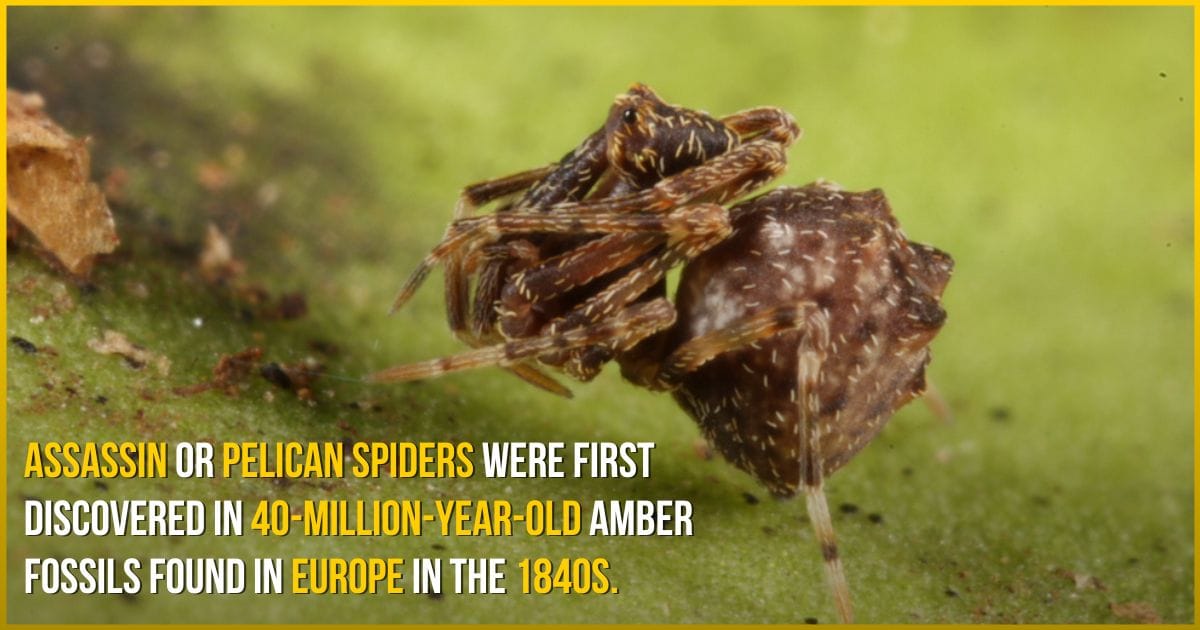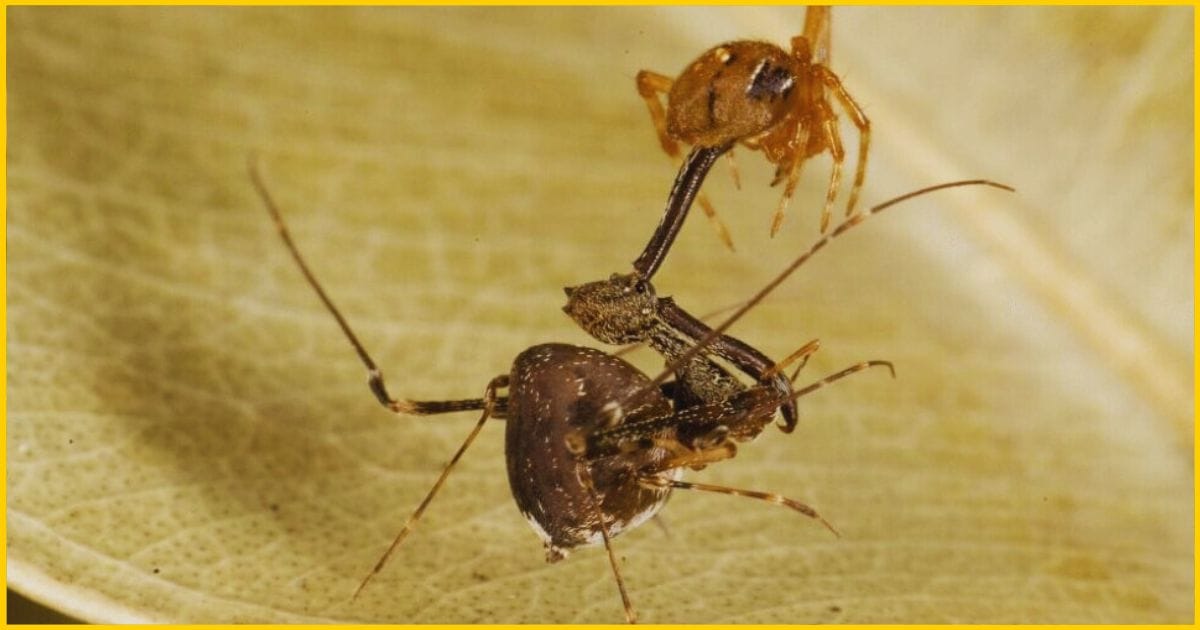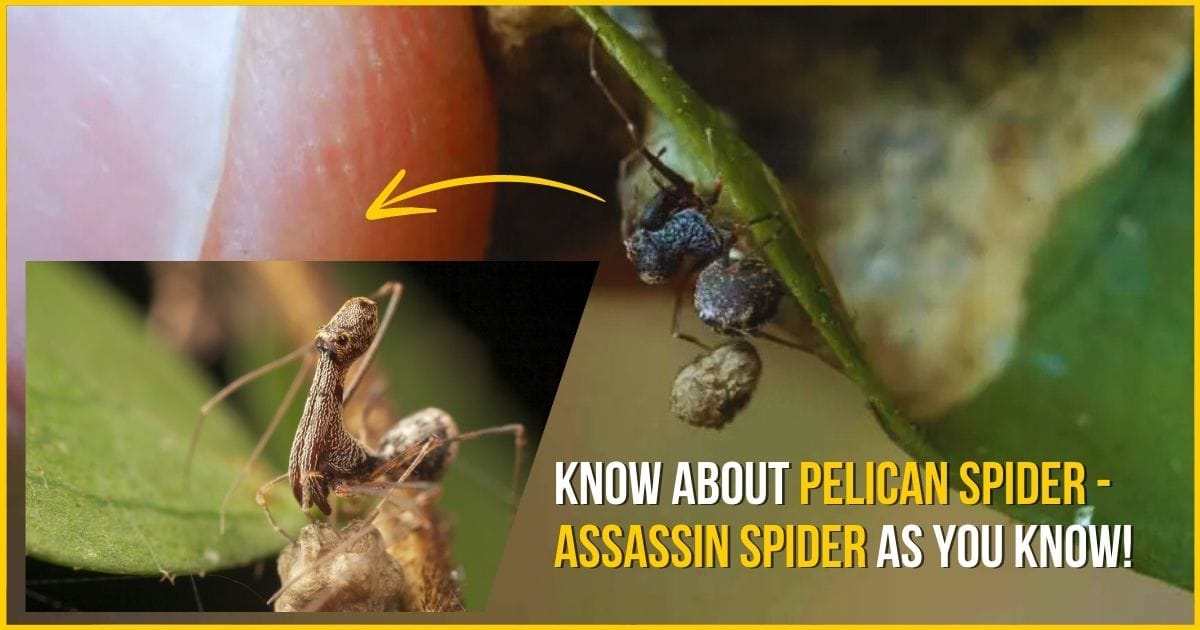Pelican spiders, also known as assassin spiders, are among the most interesting and strange spiders in the world. Their bizarre appearance and extraordinary hunting tactics have captured the curiosity of arachnologists and spider enthusiasts alike. In this comprehensive article, we will explore everything you need to know about the Pelican Spider – Assassin Spider, including their biology, behavior, habitat, and why they are also called assassin spiders. Whether you are a spider enthusiast or just curious, this detailed guide will provide you with deep insights into these remarkable arachnids.
What Is a Pelican Spider – Assassin Spider?
The Pelican Spider also known as the Assassin Spider belongs to the Archaeidae family, an ancient group of spiders that fascinate scientists because of their unusual shape and hunting behavior. They are called pelican spiders because their long head and body, along with their curved jaws, look like a pelican’s beak and neck. They are also called assassin spiders because they hunt only other spiders. They attack from a distance to stay safe from counterattacks.

Key Characteristics of the Pelican Spider – Assassin Spider
- Size: Very small, usually no bigger than a grain of rice. Their body length is less than 1 cm.
- Appearance: They have a long “neck” formed by the head and body (cephalothorax) and long jaws (chelicerae) that can lift up to a 90-degree angle.
- Color: Often pale or brownish, helping them blend into their surroundings.
- Habitat: Mostly found in Madagascar, South Africa, and Australia.
- Diet: They eat mostly other spiders.
- Behavior: They do not build webs. They hunt at night and attack by surprise. They are nocturnal ambush predators.
The Unique Anatomy of the Pelican Spider – Assassin Spider
The most noticeable feature of the Pelican Spider – Assassin Spider is its strangely long and tube-shaped body part, which looks like a giraffe’s neck or a pelican’s beak. This odd body shape is not just for appearance, it plays a crucial role in their hunting technique.

The Neck and Jaws
- The spider’s “neck” is actually an extended cephalothorax that elevates the head away from the body.
- The long chelicerae (jaws) extend beyond the neck and are equipped with fangs at the tips.
- These jaws can be raised up to 90 degrees, allowing the spider to impale its prey from a safe distance.
- This adaptation helps the pelican spider avoid being bitten by its prey, which are often dangerous spiders themselves.
Vision and Sensory Adaptations
Pelican spiders have eight eyes placed around their head, but their eyesight is not very good compared to spiders like jumping spiders. Instead of using vision, they depend mostly on touch and vibrations to find their prey. They often pluck the webs of other spiders to trick them into coming closer.
Hunting Behavior of Pelican Spider: The Assassin in Action
The Pelican Spider – Assassin is very skilled at staying hidden and using clever hunting methods. Unlike many other spiders that build webs to catch prey, pelican spiders actively hunt. They use surprise attacks to catch other spiders.

Hunting Process of the Pelican Spider – Assassin:
- Locating Prey: The spider moves slowly looking for silk threads from other spiders’ webs.
- Web Plucking: Some types of pelican spiders gently pluck the web’s threads to imitate the movement of trapped insects or other disturbances, tricking the spider living there to come out.
- Striking: When the other spider gets close, the pelican spider quickly lunges and stabs it with its long jaws.
- Venom Injection: The sharp fangs inject venom that paralyzes and kills the prey.
- Safe Distance: The pelican spider keeps the prey far away using its long jaws, which helps it stay safe from counterattacks.
- Feeding: Once the prey is dead, the spider pulls it toward its mouth to eat.
This hunting style is very specialized and works well. It allows the pelican spider to hunt and kill other spiders, even if they are bigger or more aggressive than itself.
Distribution and Habitat
Pelican spiders are mainly found in the following places:
- Madagascar: This island has the highest number of pelican spider species. Many new ones have been discovered recently.
- South Africa: Some species live in forested areas here.
- Australia: A few species are found in remote, wild regions.
They usually live in leaf litter, under tree bark, or in forests where other spiders are common. Because they are small and like to hide, people rarely see them.
Scientific Discoveries and Species Diversity
Recent scientific research and expeditions have greatly increased our knowledge of the pelican spider family. In 2018, scientists discovered and described 18 new species of pelican spiders from Madagascar alone. This discovery highlights not only the rich biodiversity of the island but also gives valuable insight into the spider’s long evolutionary history. Institutions like the Smithsonian’s National Museum of Natural History have large collections of pelican spiders, helping researchers study their unique body structure and specialized hunting skills in more detail.
These findings are important for understanding how these spiders developed such unusual features and behaviors. However, many of these species are at risk due to habitat loss. Madagascar’s forests are being destroyed at a rapid pace, putting the lives of countless creatures, including the pelican spider, in danger. That’s why conservation efforts are crucial to protect these rare and fascinating spiders and the environments they depend on.
Why Are They Called Assassin Spiders?
The nickname “assassin spider” is a perfect fit for the pelican spider because of its deadly and precise hunting style. Unlike most spiders that use webs to catch their prey, assassin spiders actively seek out and kill other spiders with remarkable skill and strategy. Their long, extended jaws work like a spear or even a “forklift,” allowing them to stab their prey from a safe distance.
This unique method keeps them out of reach from the bites of venomous or aggressive prey. What makes the assassin spider especially fascinating is that it doesn’t just hunt other spiders occasionally—it specializes in it. This rare focus on spider-only predation sets it apart from almost every other spider species in the world, making it a truly unique and remarkable hunter among arachnids.
Are they dangerous to humans?
Despite their fearsome hunting tactics and intimidating nickname, pelican spiders are not dangerous to humans. These spiders are extremely small and tend to stay hidden, living quiet lives away from human activity. They are not aggressive and do not bite people. In fact, their venom is specially adapted to target other spiders and has no harmful effect on humans. Pelican spiders prefer to avoid contact altogether, remaining out of sight in forest floors, under bark, or among leaf litter in their natural habitats.
Fascinating Facts About the Pelican Spider – Assassin Spider
- Pelican spiders are considered living fossils, with specimens found preserved in 50-million-year-old amber.
- Their unique body shape, including the elongated neck and jaws, has remained mostly unchanged for millions of years.
- These features are evolutionary adaptations designed for hunting other spiders.
- Due to their specialized diet and stealthy ambush tactics, they are often seen as nature’s assassins.
- Scientists continue to discover new species as they explore remote habitats, especially in places like Madagascar.
Conclusion
The Pelican Spider – Assassin stands out as a unique and highly specialized predator, using its remarkable long “neck” and jaws to expertly hunt other spiders. Despite their fierce hunting tactics, these spiders are harmless to humans and remain fascinating examples of evolutionary adaptation.
